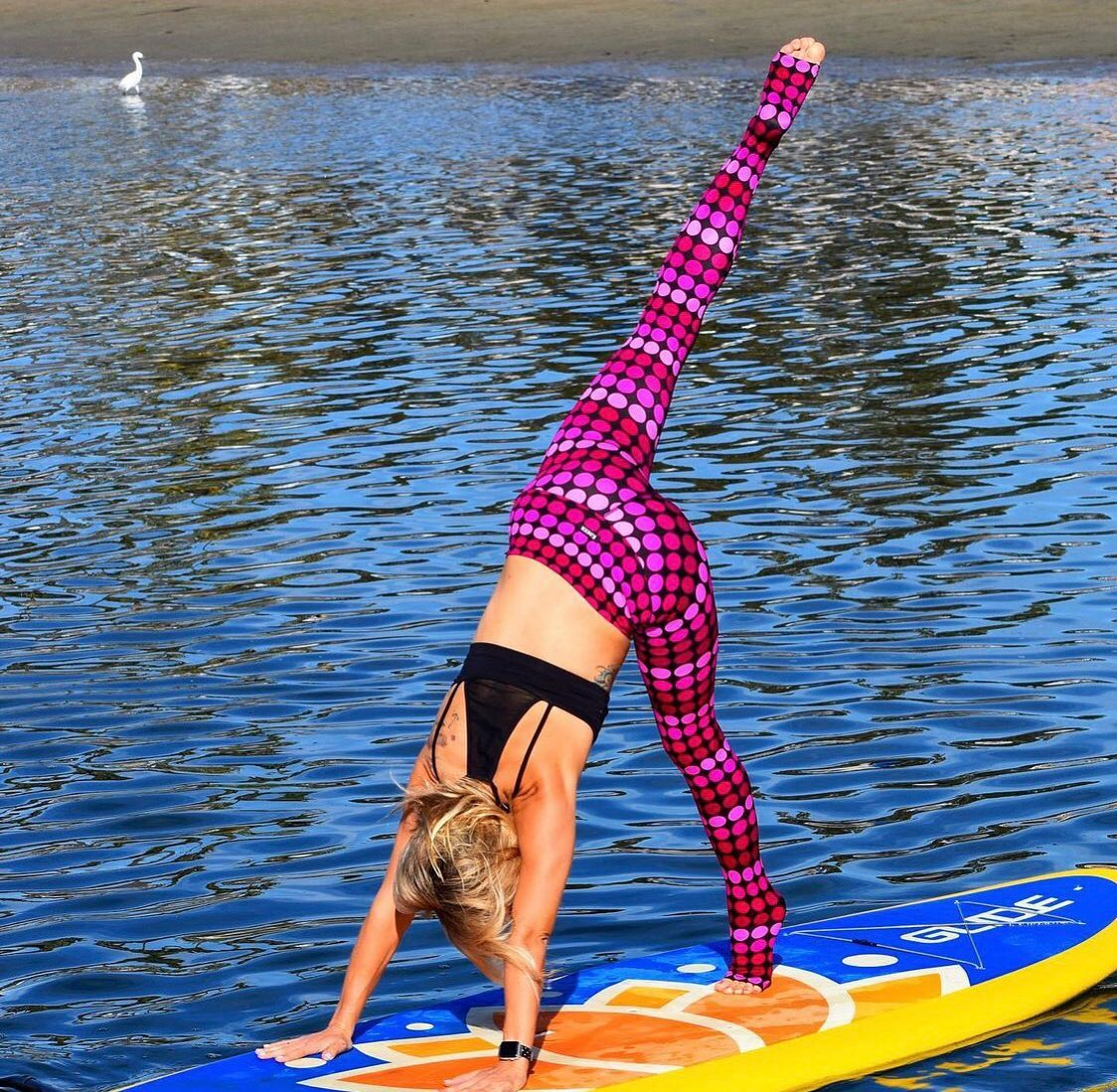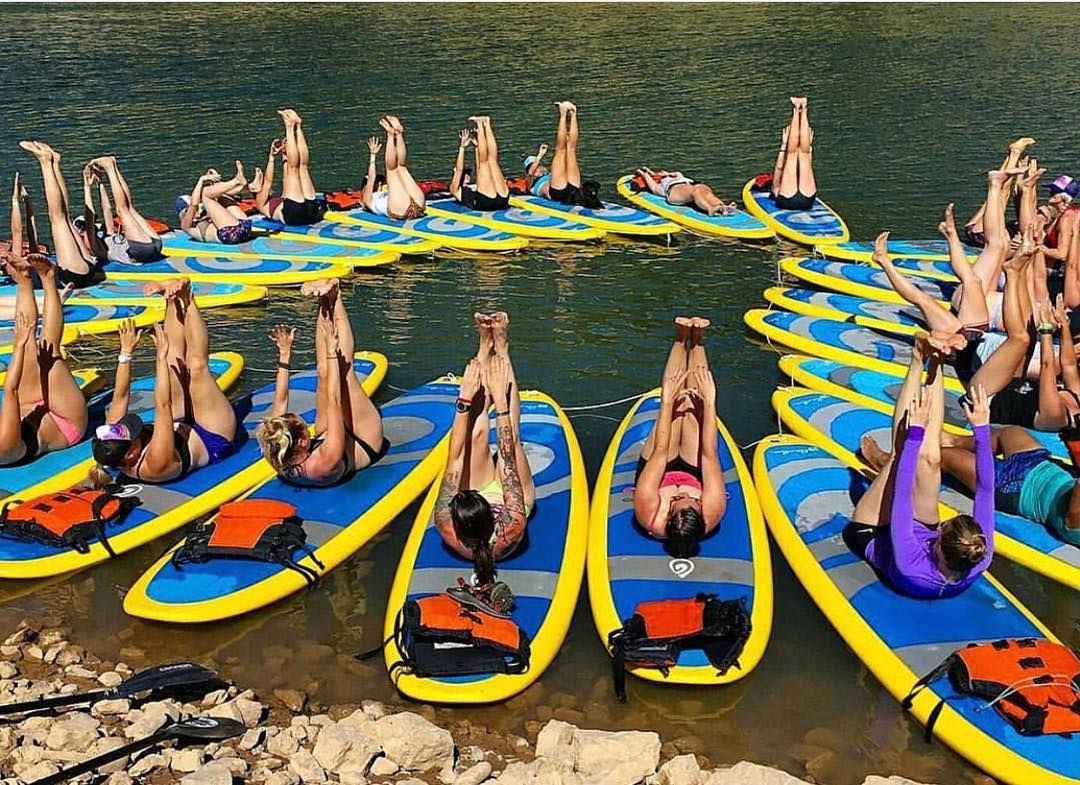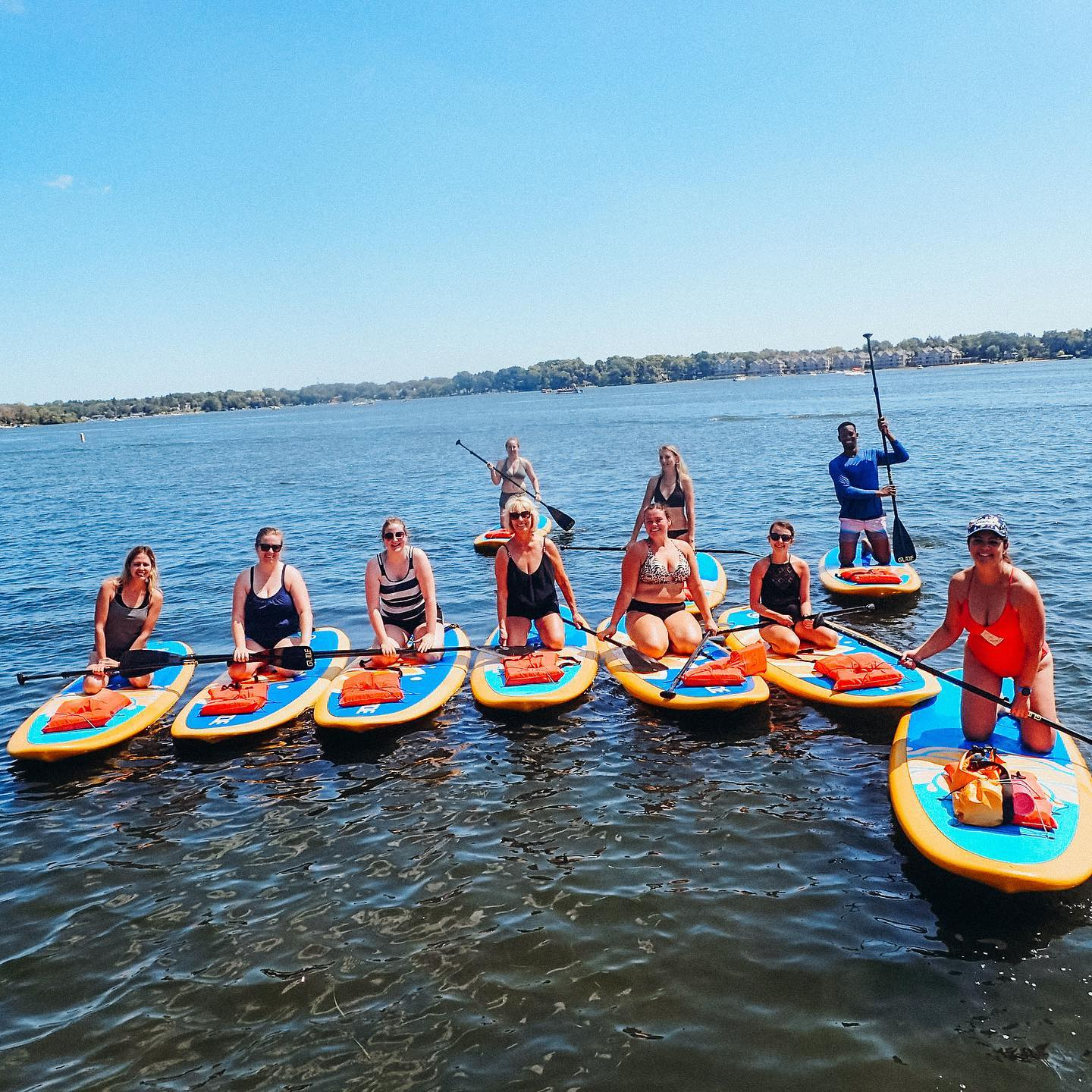
A Guide to SUP Yoga: Finding Balance and Serenity on Your Paddle Board
Have you been wanting to try SUP Yoga? Read this guide first.
Introduction
Hey there, fellow paddle boarding enthusiast! Have you ever considered trying SUP yoga? If not, you're missing out on one of the most rewarding and unique experiences in the world of stand-up paddle boarding. SUP yoga combines the physical challenges of yoga with the serenity of being out on the water, creating an unforgettable workout for your body and mind. In this guide, we'll explore everything you need to know about SUP yoga, from its benefits to essential poses and helpful tips. So grab your inflatable paddle board or hard board, and let's dive in!
Benefits of SUP Yoga

-
Improved Balance: Practicing yoga on an unstable surface like a yoga paddle board challenges your balance, making you engage your core muscles more than you would on solid ground.
-
Increased Strength: The added instability of the yoga SUP board requires you to use more muscle strength to maintain balance.
-
Enhanced Focus: SUP yoga demands greater concentration and mental focus as you navigate the ever-changing conditions of the water and execute your yoga poses.
-
Connection with Nature: There's something incredibly soothing about practicing yoga surrounded by the beauty of nature. The gentle sounds of water lapping against your board and the calming effect of being outdoors can enhance your yoga experience.
-
Reduced Stress: Like traditional yoga, SUP yoga encourages mindfulness, deep breathing, and a sense of calm. Being on the water can further amplify these stress-reducing benefits.
Essential SUP Yoga Poses

-
Downward-Facing Dog: This classic pose is perfect for SUP yoga as it helps to stretch the entire body while engaging your core and improving balance.
-
Warrior II: A powerful standing pose that challenges your balance and strengthens your legs, Warrior II is a must-try on your paddle board.
-
Seated Forward Bend: This pose provides an excellent stretch for your hamstrings and lower back, while also encouraging relaxation and deep breathing.
-
Boat Pose: Test your balance and core strength with this challenging seated pose that requires you to balance on your sit bones and lift your legs off the board.
-
Savasana: No SUP yoga session would be complete without the final relaxation pose, Savasana. Lying on your back, let the gentle rocking of your yoga stand up paddle board lull you into a state of complete relaxation.
Helpful Tips for SUP Yoga Success

-
Start with a Stable Board: Make sure to choose a SUP yoga board with adequate stability for yoga practice, like one of our inflatable paddle boards or hard boards.
-
Anchor Your Board: To prevent drifting, use an anchor or tether your yoga specific boards to a fixed point in shallow water. This will help you maintain your position during your practice.
-
Choose Calm Waters: For the best experience, practice SUP yoga in calm, flat water with minimal wind and waves. Lakes or sheltered bays can be ideal locations.
-
Warm-Up: Start with a few basic paddle boarding exercises to warm up your body and familiarize yourself with the movement of your hard or inflatable paddle board.
-
Be Patient: Like any new skill, SUP yoga takes time and practice. Be patient with yourself, and don't get discouraged if you wobble or fall off your floating yoga mat. Embrace the challenge and enjoy the journey!
-
Dress Appropriately: Wear comfortable, quick-drying clothing that allows for a full range of motion. You might also want to wear a hat and sunscreen to protect yourself from the sun.
-
Safety First: As with any water-based activity, it's essential to put safety first. Wear a life jacket or personal flotation device (PFD) and use a leash to keep your board close by. Check out our guide on life jackets for paddle boarding for more information.
-
Bring a Friend: SUP yoga can be a fun and rewarding experience to share with a friend. Practicing together can also provide extra motivation and support as you learn new poses and techniques.
-
Take a Lesson or Join a Class: If you're new to SUP yoga or want to improve your skills, consider taking a lesson or joining a class. Many SUP yoga instructors offer group classes or private lessons, making it easy to find the right option for you.
-
Have Fun: Remember, the ultimate goal of SUP yoga is to have fun and enjoy the experience. Embrace the challenge, laugh at your wobbles, and relish the serenity of being out on the water.
Conclusion

SUP yoga is an incredible way to connect with nature, challenge your body, and find inner peace. With the right board, a little patience, and some practice, you'll be well on your way to mastering this unique and rewarding discipline. So what are you waiting for? Grab your inflatable paddle board or hard board and start exploring the world of SUP yoga today!
For more information on all things paddle boarding, be sure to check out our other articles, like how to choose a paddle board for beginners and how to strap a SUP to your roof rack. Enjoy your new found peace and serenity on the water!


